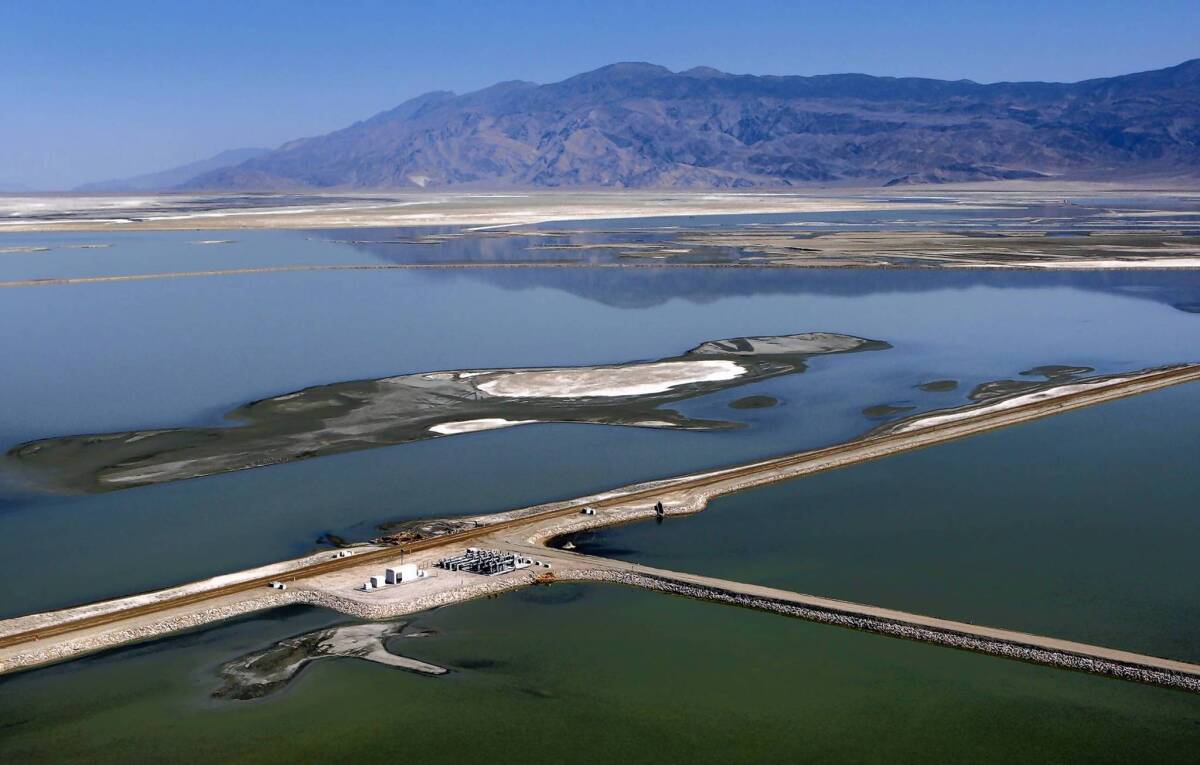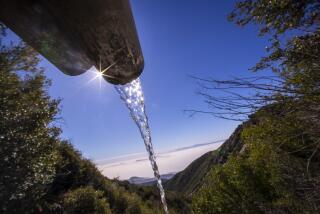Federal judge dismisses DWP lawsuit over Owens Lake dust

- Share via
A federal court judge on Thursday dismissed a lawsuit filed by the Los Angeles Department of Water and Power against a state agency it claimed was illegally forcing the city to waste billions of gallons of precious High Sierra water to control dust on dry Owens Lake.
U.S. District Court Judge Anthony W. Ishii determined that the issues are for state courts to decide because the Great Basin Unified Air Pollution Control District is a state agency. The DWP has a similar challenge pending in state court.
However, Ishii went on to say he found “no reason or logic” to some DWP arguments, including whether state or federal agencies bore some responsibility for controlling dust.
The DWP argued that ratepayers have already spent $1.2 billion for vegetation, gravel and flooding of Owens Lake that have reduced dust pollution by 90%. It also claimed that it is responsible for dust arising only from the roughly 42 square miles of the lake bed drained to provide water to the city.
Two years ago, Great Basin ordered Los Angeles to control dust on an additional 2.9 square miles of lake bed, a job that could cost ratepayers an additional $400 million.
In the lawsuit, the DWP said the State Lands Commission and the U.S. Bureau of Land Management should be responsible for sharing the costs of dust abatement measures because they own about 10 square miles of the lake bed.
Ishii, however, said that the issue isn’t who owns or manages the land, but who is responsible for creating the pollution by draining the lake.
In 1913, the city completed a 233-mile-long aqueduct from Owens Valley to the city, and began transferring water that had historically flowed into the lake. The water transfers, Ishii said, “reduced the lake into a dry bed that is an abundant source of very fine particulate matter less than 10 microns in diameter that is readily blown into the air.”
Today, Owens Lake is the largest single source of particulate matter air pollution in the country. Particulate air emissions are a danger to human health and the environment.
Over the last year, dust storms on the lake bed exceeded the federal standard on 25 days, resulting in the issuance of local health alerts.
Great Basin air pollution control officer Ted D. Schade described Thursday’s decision as “an important victory for every person in California that cares about clean air and a healthy environment.”
But DWP spokesman Joe Ramallo said the ruling “was largely procedural and did not address the merits of LADWP’s core claim — that LADWP is being forced by local regulators to waste water and money while ignoring a viable alternative for dust control at Owens Lake.”
Separately, the city faces possible civil penalties of nearly $8 million for its refusals to pay fees related to air pollution measures ordered by Great Basin. Trial in that matter is set for Kern County Superior Court in October.
More to Read
Sign up for Essential California
The most important California stories and recommendations in your inbox every morning.
You may occasionally receive promotional content from the Los Angeles Times.














